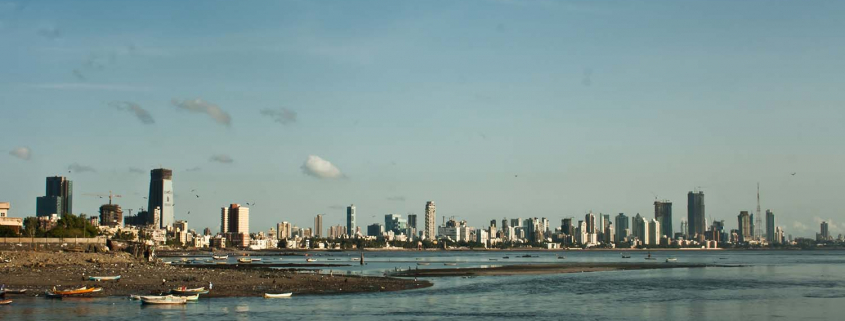The Indo-Pacific Affairs: Between India’s Ambitions and ASEAN’s Position
Habibah H. Hermanadi – Research Associate to Institute of International Studies and Post-graduate candidate from University of Delhi
India imagined a larger role beyond its current dominance in South Asia, the Act East Policy had become a known concept subject to the discussion under foreign policy context. When India reaches Southeast Asia, it becomes clear ASEAN became one of the defining actors which shall complete the pieces of Indian Act East puzzle. Thus, in this article, writer will try to capture the demands and perceptions of India out of ASEAN, focusing on the great interception of Indo-pacific concept which was recently brought up in the 34th ASEAN summit in Bangkok, as India on their own had developed its own model of what New Delhi ought to be the groundwork of their foreign policy in comparison to ASEAN’s outlook on what they define as Indo-Pacific.
Naturally, when it comes to dealing with ASEAN, it has been a tricky ordeal for India. The regional organization claimed centrality has been a vague click in the realpolitik context, and this put New Delhi in a difficult position if the regional organization will instead hampers the gateway to further India’s Act East Policy, ASEAN is definitely no South Asian Association for Regional Cooperation (SAARC) where India’s dominance is inevitable and India can stretch its arms to fast-forward other member states compliance unlike the situation where New Delhi have to wait around for ASEAN and its sluggish narratives. Moreover, the abundance of normative entanglement caused India to strategically reach certain players who happened to be ASEAN member countries, for example, India’s commitment to Cambodia, Myanmar, Laos, and Vietnam (CMLV) economic development and cooperation and deepening maritime dialogue with Indonesia, Narendra Modi has made it clear of what India wanted all along. Reflecting upon India’s perception, we can see how this signified the lack of relevance of ASEAN might portray as a regional organization, thus we are moving to the next point, whether or not ASEAN’s response to Indo-Pacific put the organization closer to India’s arms.
Indo-Pacific: a case for unification or dissension?
India has committed itself in actively promoting Indo-Pacific, constructively as an idea and as a regional model of cooperation. In addition to containing China’s Belt and Road initiative which India has strongly voiced against, the key point that differentiated the two models lie on Indo-Pacific’s freeness and cooperative nature and BRI that according to India ignored core concerns of sovereignty and territorial integrity.
On the ideational level, Indo-Pacific for India appeared as a challenge to the old notion of Asia-Pacific that excluded India, setting apart an East Asian led economic regime. However, as the term gained popularity, considering the responses from France, the United States, and Japan, ASEAN felt the need to reassess the infant concept into the best of its interest.
The Summit which took place last June answered such need by some key points that clarified ASEAN’s intention in complying to Indo-Pacific model. However, despite the so-called finalized version of the outlook is, the substance has been designed in such ASEAN manner, to which du Rocher deemed slow due to the narratives trap ASEAN has when it comes to the diplomatic mechanism.
While India pointed out the importance of Indo-Pacific as an advanced concept, its existence meant to face contemporary challenges and match up new power configuration. ASEAN is still assuring its outlook would recognize the organization’s significance, pointing out the need of ASEAN centrality both geographically and policy-wise. This kind of response is alien to New Delhi style of pragmatic foreign policy hoping for a rather concrete response, yet ASEAN member states’ concerns with their traditional allies were also one of the reasons of the ambivalent stance the organization took when it comes to Indo-Pacific.
Perhaps the great crossroad between what New Delhi wanted out of Indo-Pacific and ASEAN became clear in the “rule-based-order” clause, an option which indicated ASEAN common understanding with Beijing, in comparison to rule of law basis. The mechanism they proposed pointed out how international law is incapable to solve the regional problem, while New Delhi begs to differ with the importance of referring to the rule of law when it comes to diplomatic conducts within the Indo-Pacific model of regional cooperation. This difference can harbor future conflict of interests between New Delhi, which currently tries to contain Beijing, while at the same time needing ASEAN’s compliance to further its foreign policy objectives.
Conclusion
To round up the commentary, we have to refer back to what India wants out of ASEAN, and through this context, we can see that India wants the Indo-Pacific to work under India’s terms, and within that terms, ASEAN must be included. Throughout the competing concepts, models, or regional external influence from some of the major global politics players. We can see despite accepting the common idea of Indo-Pacific, ASEAN and India are not completely on the same side in the development of this idea. For ASEAN, this is subject to ASEAN’s way of diplomatic engagement among member states alongside domestic conditions which cannot be denied, and regional challenges which the organization has to overcome. For India, the open to interpretation and vast meaning of Indo-Pacific, a concept which was meant not to dictate, definitely puts New Delhi in the intricate position.
So far, New Delhi’s concern over Beijing’s next move had been matched up by deepening strategic bilateral relations with ASEAN member states, considering these strategic partnerships will result in a tangible outcome. Perhaps, despite ASEAN’s decision on the creation of its Indo-Pacific Outlook the dynamics of India to Southeast Asian countries will remain the same, when it comes to the region, New Delhi has to adjust to the region’s dynamics and diplomatic pace instead of bypassing the ambitions through ASEAN.



